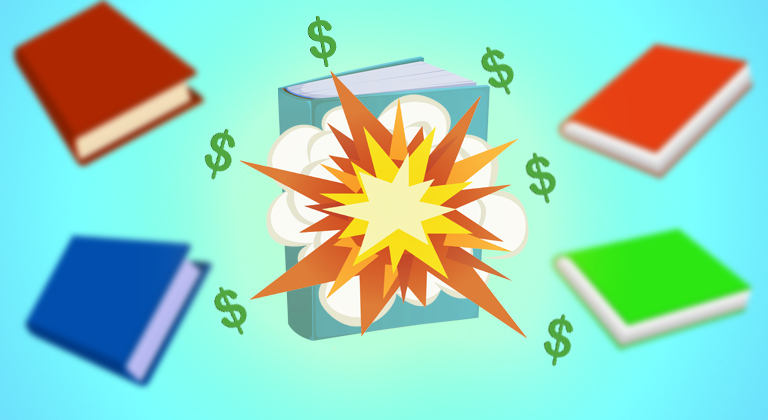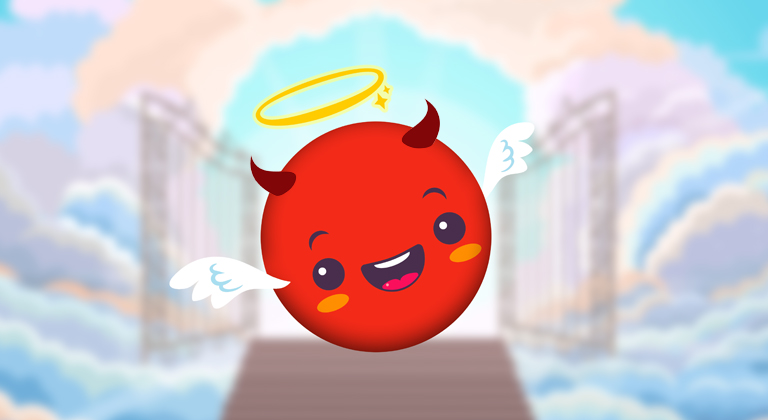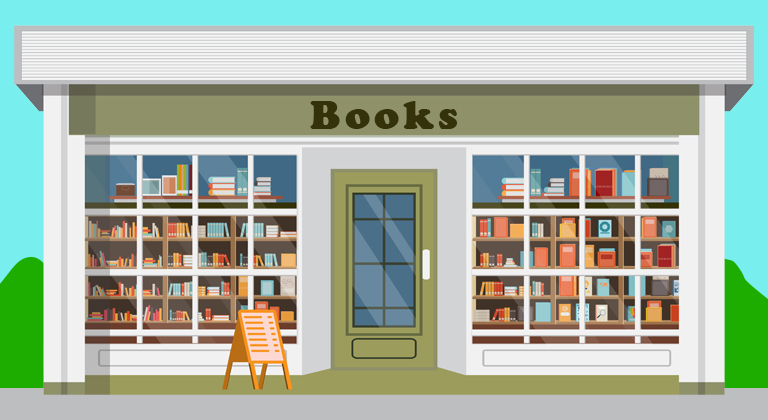The ONLY Four Ways to Sell Books
The distinction between marketing and selling is crucial, as many self-published authors have discovered the hard way. The best promotional campaigns may bring a potential reader to the edge of a sale, but isn’t always enough to close the deal. But if dumping money into ads isn’t the most effective way to sell copies of your book, then what is?
That’s precisely the question Ginger addresses in today’s blog, as he delves into the four key attributes that have the power to significantly impact the conversion of traffic into sales. You don’t need to incorporate them all, as some may align better with your unique situation than others. Yet, harnessing just one of these attributes, as detailed below, can substantially enhance your chance of transforming your passion for writing into a thriving and profitable career.
The purpose of many of my blogs is to help authors actually SELL copies of their books. There’s nothing more validating or rewarding to an author than to have strangers pay their hard-earned-money to read a writer’s words, and ultimately the only objective of writing anything is to have somebody else read it.
But selling books isn’t necessarily as easy as you might think. The old days of Amazon are long gone – the Wild West of a decade ago, in which you could publish a book with a solid cover and blurb and expect a fair number of sales organically. Today, if you’re not actively marketing or promoting your book, it might as well be invisible.
But marketing and promoting your book is different to selling it.
Like many self-published authors, I sadly know this hard truth first-hand! Back when I was first getting started, I did a lot of marketing and promoting. In fact, I wasted hundreds (thousands?) of dollars advertising books that never sold very many copies. Just as you can lead a horse to water, but you can’t make him drink – you can lead a reader to your product page, but you can’t make them click Buy Now!
That’s the difference between marketing and selling – and the difference between whether or not you have a viable career as a self-published author.
But hindsight is a great teacher, and from the mistakes I made building my own successful self-publishing career, and watching other authors achieve success with their books, I think I’ve identified the four key attributes that can turn traffic from your Facebook ads into readers who pay for your book.
Now, your book doesn’t have to have all four of these attributes to be successful. Just one will do. But if you can’t leverage at least one of these four angles, it won’t matter how much money you spend on advertising, or how much marketing and promotion you do. You simply won’t sell copies of your book.
If you CAN target one (or more) of these angles when marketing your book, you might find you achieve a level of success you’d previously not thought possible.
Attribute #1: Be an author people already know
The easiest method for selling lots of books is to already be selling lots of books!
It’s a sad reality, but the bigger the author’s name, the more copies of their book they will sell – automatically! People pre-order the latest Stephen King, Lee Child, or Frieda McFadden book months in advance, and they normally shoot up the best-seller list the moment they’re released.
This is because authors you already know, are familiar with, and have read before are a safe bet when it comes to investing your hard-earned book money. Not all Robert Patterson’s books are amazing, for example – but they’re all bloody good. Being an author readers are already familiar with is a cheat-code for getting them to click “buy now.”
But if you’re not in the same league as Lee Child yet – don’t despair! Because what happens on a macro level with traditionally-published giants like Stephen King also happens for established self-published authors – just on a much smaller scale. Yet, if you’re a single author self-publishing your books, that small scale might be more than enough to be a big success. There’s a theory that you “only” need 10,000 readers to build a career out of publishing. While that sounds like a lot, it’s a fraction of the tens of thousands of copies big name authors have to sell in order to pay not just their own bills, but also the salary of all the publishers, editors, publicists, and admins who worked on traditionally publishing their books.
That’s why the best advertisement for your current book is your next one – and why authors who engage with their readers on social media and through their subscriber lists (Jack Carr is the perfect example) tend to nurture a community of readers who’ll eagerly buy anything they publish.
Attribute #2: Have a killer hook!
Self-published authors who are just starting out don’t have the advantage of name recognition, or a mailing list full of eager fans. However, that hasn’t stopped some breakout successes from launching themselves into the best-seller lists (and sometimes even the movie studio.)
What these lesser-known authors had was a killer hook – a concept for their book that was so strong, readers couldn’t help but click the “buy now” button as soon as they read the blurb. Andy Weir’s book The Martian is the perfect example of this. While originally self-published, the book had such a killer concept to it – an astronaut stuck millions of miles away from home – that everybody who heard about it or visited the book’s product page felt compelled to buy it.
If you have a truly killer concept or hook for your book – one that can’t help but make people curious about finding out more – then you can bypass the challenge of being an established author and start getting new readers to take a chance on your writing.
I wrote a blog post about coming up with killer concepts for your book that you might find both interesting and useful. This approach is one of the most effective ways to break into the competitive world of self-published even as a complete newcomer – and if you can combine it with a bit of name awareness as an author, you’re onto a real winner.
Attribute #3: Become embraced by a community
Dozens of completely unknown authors became famous overnight when Oprah Winfrey selected their books to be part of the Oprah Book Club. Likewise, Reese Witherspoon has made a business out of “testing” new authors with the subscribers to her book club, and then catapulting the most successful of them into fame and fortune by securing movie deals for their books. Even the king of self-publishing, Mark Dawson, saw his career as an author transformed when his book was selected to be part of the massive Richard and Judy Book Club in the UK.
Becoming a featured author within a large community of readers is one of the most powerful ways to supercharge your success as an author. When it comes to sales, the “social proof” alone is equivalent to the boost of being a well-known author – and books that are read as part of a book club or community often have much higher engagement rates than they would otherwise. This translates into more reviews, recommendations, and readers being more likely to check out previous titles from your back catalog.
Of course, getting your book into Oprah Winfrey’s recommendation list isn’t exactly easy – I think that’s got far more to do with who you know, rather than the quality of your book. However, smaller-scale book clubs, blog tours, and other community-based reading projects can prove to be a major boost to your book sales. I’m part of a small online community of James Bond fans and we’ve seen self-published books become incredibly successful when they’ve been recommended and shared by fellow members.
The best way to become embraced and showcased by communities such as this is to become a useful, active, and very visible member of that same community. It’s much easier to become “famous” among a few thousand passionate community members than the whole of Instagram or Twitter – and the smaller and more close-knit a community, the higher the number of people who’ll support you within it.
Attribute #4: Solve a really big problem
The fourth and final attribute that helps shift copies of your book is largely limited towards non-fiction titles – but it can still be huge. That’s writing a book which solves a problem.
Rich Dad Poor Dad by Robert Kiyosaki is a great example of how this works. Originally self-published in 1997, this self-help book featuring advice from the “rich dad” many people never had went on to sell 32 million copies worldwide, and catapulted its author into a seven-figure career as a speaker and consultant.
Obviously, your sights don’t need to be set so high – but if you have a non-fiction book that provides a solution to a problem people have, that’s often all it takes to get new readers to trust their time and money with you, even though you might be an unproven author.
I’ve experienced this myself. After losing a bunch of weight through intermittent fasting, I wrote a non-fiction book on fasting called The Cheat Code. Although it hasn’t made me a millionaire, the book did hit the bestseller charts in a couple of categories – and on the occasions I invest money advertising it, it consistently makes a discernable profit.
The trick isn’t just to solve a problem. It’s to present that problem – and the solution – in a way that’s packaged and targeted towards a specific audience of people. In Kiyosaki’s example, it was young people who were frustrated that their parents had never taught them financial literacy. With The Cheat Code, it was young men who wanted to lose weight, but still eat burgers and beer. Either way, packaging the book specifically for that audience made it a must-purchase when you reached them through advertising and marketing.
Conclusion
Selling books isn’t easy. For the longest time, even traditional publishers only made a profit on half the books they published. The problem was, they never knew which half that would wind up being!
Self-published authors have an advantage, however. Not only don’t they have the overheads of a traditional publishing firm – but they also tend to have a much closer understanding of who it is they’re trying to reach with their books. That’s why any of these four attributes – or ideally a combination of them – can transform the career of an independent author.
But sometimes it takes a bit of humility and self-reflection to examine your books as they currently are and commit to making the changes that helps bring any of these attributes to the forefront.
In my case, with The Cheat Code, I needed to create a much more compelling cover and blurb before my target audience of hungry young men would buy it. In the case of Andy Weir, The Martian only took off (no pun intended) when people started talking about the crazy “hook” of a lone astronaut trapped on Mars. Every book needs a catalyst to propel it up the sales rank – and sometimes you’ll have to do some work identifying what that might be.
But the four concepts I’ve outlined above are solid, and have a proven track record of helping to sell books. If you can examine your own catalog of books through this lens, you might well be able to identify small, but significant changes that you can make to turn your poorly performing books into healthy sellers.












Great insight, thanks.I want to join your mailing list.
I have to say, this post was quite upsetting. As a new author recently published last month with a current 5 Star rating, to be told there are ONLY 4 ways to succeed in sales is crushing! And I believe, wrong. While one might not make a huge immediate splash, a solid, well-crafted book with interesting characters and plot can certainly succeed with effective marketing. Not every book can be a unicorn success!